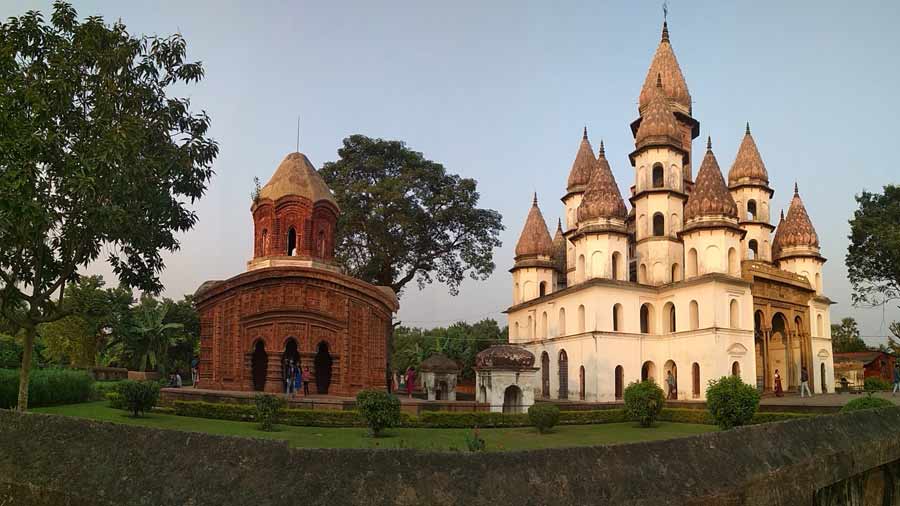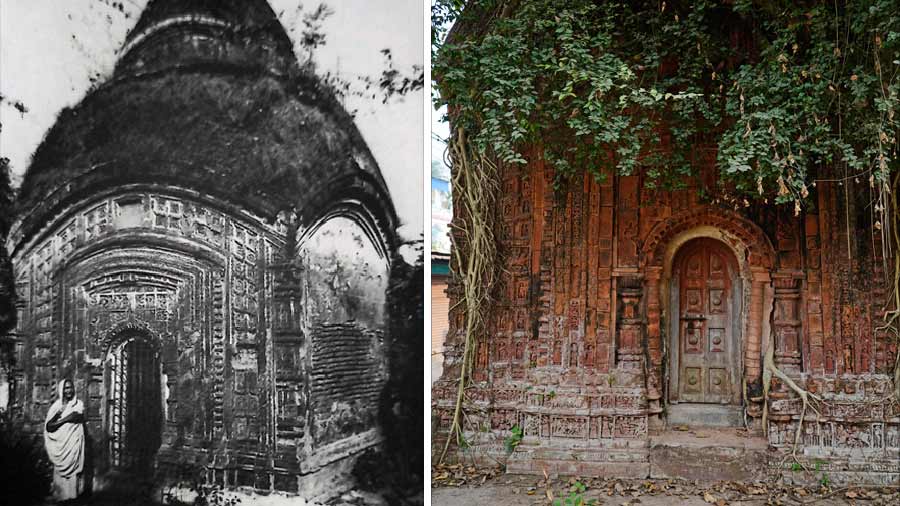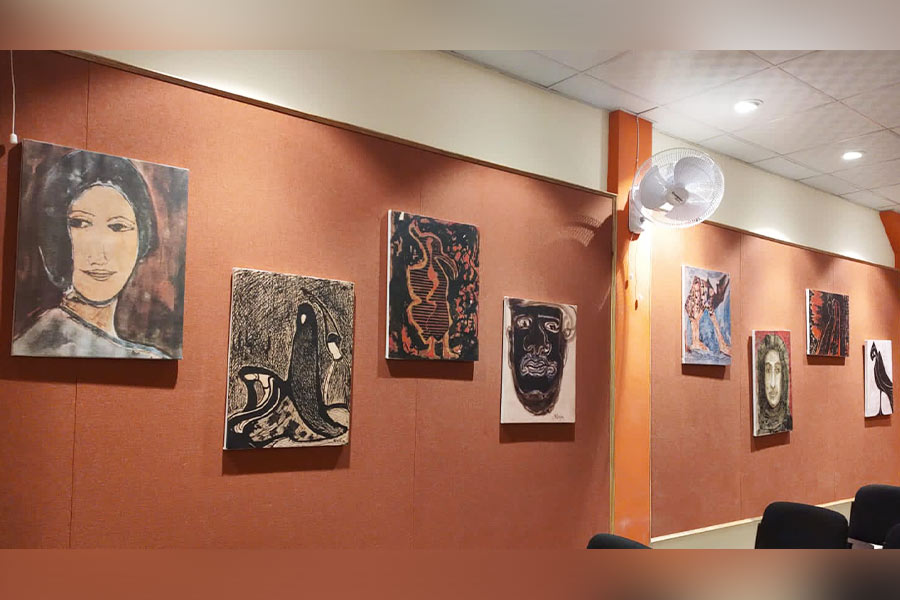The district of Hooghly has several locations ideal for a day tour. One can begin with the historical place of Bansberia that features the Hanseswari Temple and Ananta Basudev temple inside a compound surrounded by a moat. Both the temples are protected by the Archeological Survey of India.
The presence of the moat suggests the existence of a fortification. Indeed, there was a fortification along with a moat in the area, made by Rameshwar Dutta Roy around his family’s residential area Banshabati, commonly known as ‘Bansberia’, for protection from Bargi attacks. Rameshwar was son of Raghab Datta Roy who built the house, but originally resided at Patuli (near Katwa). Raghab was allotted vast rent-free lands and zamindari rights of 21 Parganas under Satgaon region in 1649, during the reign of Shah Jahan.
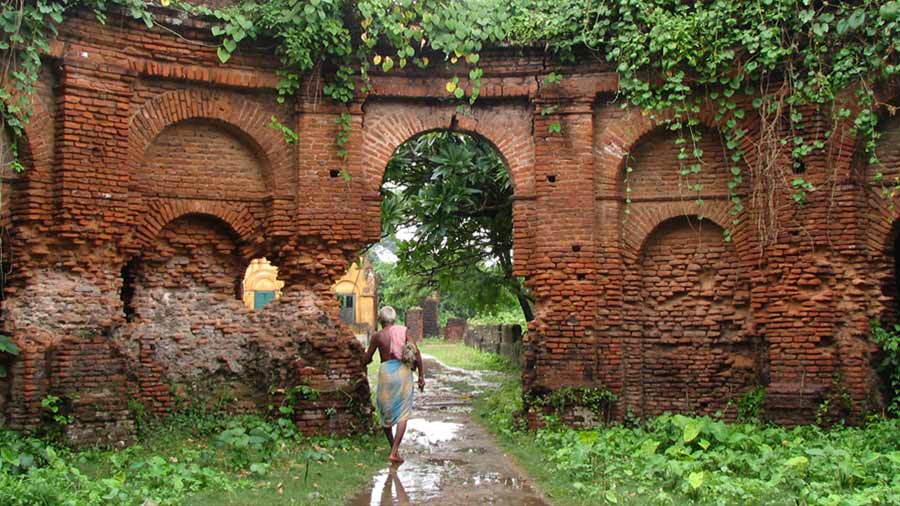
The interior walls of the fortification made by Rameshwar Datta Roy at Bansberia
Amitabha GuptaA colossal gate and some high walls are what remain of the fortification. The family in later stages used the surname, Deb Roy. Their family residence still exists in the vicinity.

The Ekratna Ananta Basudev temple, built in 1679 by Raghab Datta Roy
Amitabha GuptaThe Ananta Basudev temple was built by Rameshwar Dutta in 1679. The Ekratna-styled temple with a single octagonal pinnacle has got exquisite terracotta panels on its walls, arches and base, with a covered circumambulatory pathway in its interior around the inner sanctum. Even the interior walls have fascinating terracotta panels. The terracotta motifs feature naval warships, social and war scenarios, deities like Brahma, Bishnu, Maheshwar, Kali and also scenes from Krishnalila.
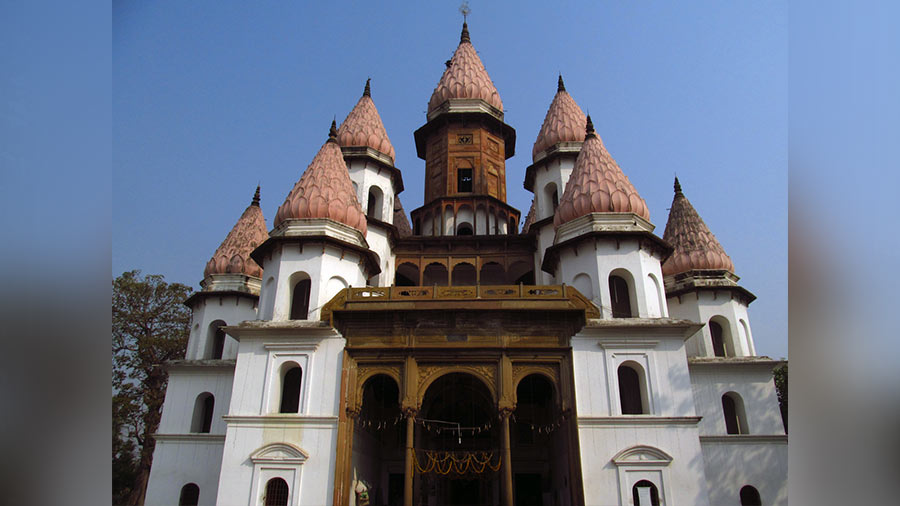
Hanseswari temple was designed by Nrisingha Dev Roy. His second wife, Rani Shankari, completed the temple construction in 1814
Amitabha GuptaHanseswari is a five-storey building and has 13 pinnacles, each designed like a lotus bud. Eight of the pinnacles are in eight corners, four in the middle and the largest in the center.
The brainchild behind the design of this temple was Nrisingha Dev, great grandson of Rameshwar Dutta. Apart from this temple, Nrisingha Dev constructed another temple in 1788, for Goddess Swambhaba, which ceases to exist at present.

The devi’s idol at Hanseswari temple
Alinda BardhanBesides being the most influential ruler of the family, Nrisingha Dev was also a talented painter, musician and translator. He translated Uddish Tantra, a book on medicine into Bengali and took leading part in translating Kashi Khanda.
Approximately between the years 1792 to 1799 he stayed at Varanasi, with his zamindari entrusted to a reliable relative. At Varanasi, he was associated with many Yogis and Tantriks.

Terracotta plaques on the outer walls of the Ananta Basudev Temple
Amitabha GuptaAfter coming back from Varanasi, Nrisingha Dev decided to construct a stone-and-brick built temple, where he tried to demonstrate the theory of Tantrik Shat-Chakra-Bheda (piercing of the six centres or chakras or padmas (lotuses) of the body through Kundalini Shakti) through the architecture of the temple. Nrisingha Dev died in 1802 and it was left to his second wife, Rani Shankari to take over the construction, which was completed in 1814.
The temple floors are connected through stairs from the inner sanctum like a maze, which is not easy to navigate without a guide. The five stone staircases connecting the floors represent the five narhies, namely Ira, Pingala, Susumna, Bajrakhya and Chitrini and the Goddess in the octagonal sanctum representing Kulkundalini Shakti. Narhies are pathways in the system. The maze created by the stairs indicates that you cannot achieve Shat-Chakra-Bheda without the help of a proper Guru. The upper floors are not accessible to the visitors. The book, The Bansberia Raj, mentions “…in the upper storey is a Shiva carved out of white marble, as there are 12 others underneath the remaining 12 minarets”.
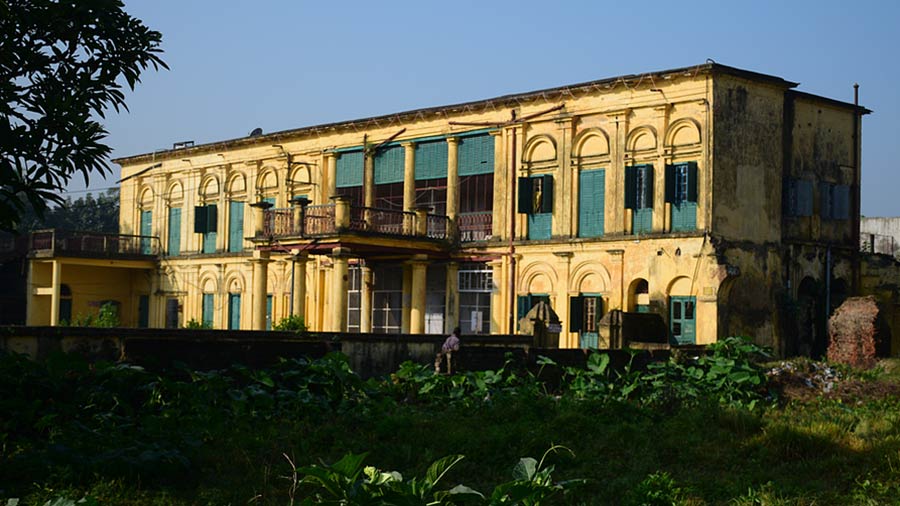
The present condition of the residence of the Bansberia Raj family
Amitabha GuptaThe deity of the temple is a four-armed Goddess, painted in blue, made of neem wood sitting in Lalitasana posture on a lotus-flower with 12 petals, whose stalk springs from the navel of a stone-made Shiva or Rudra idol lying on a circular base featuring five concentric triangles similar to “Kali Yantra”, below which lies a pink lotus with eight petals, followed by a blue lotus with 1,000 petals. The upper left hand of the deity brandishes a sword, while the lower left hand holds the severed head of a demon. The upper right palm is in “Abhaya Mudra”, offering protection, while the lower right palm offers her blessings to all.

Hanseswari temple with its reflection on the water of the moat encircling the premises
Amitabha GuptaThe Goddess is known as Hanseswari Devi. The name is a combination of the words ‘Hansa’ and ‘Ishwari’. According to Niruttor tantra, the sound ‘Hong’ and the sound ‘Sah’ are emitted continuously during human breathing. This is known as Hansa Mantra or Ajapa Mantra, which is continuously chanted by itself during the lifetime of a person. So, ‘Hansa' itself is Mahashakti Kulkundalini Bhagwati. ‘Ishwari’ means goddess. Also, Shiva and Shakti are one and equal. ‘Hong’ represents ‘Shiva’ and ‘Sah’ represents ‘Maha Shakti’ or the ‘Mother Goddess’.
The Goddess Hanseswari is worshipped as Kali during Kali Puja. The gateway to the inner sanctum is decorated with colourful geometric patterns. The ceiling has intricate designs.
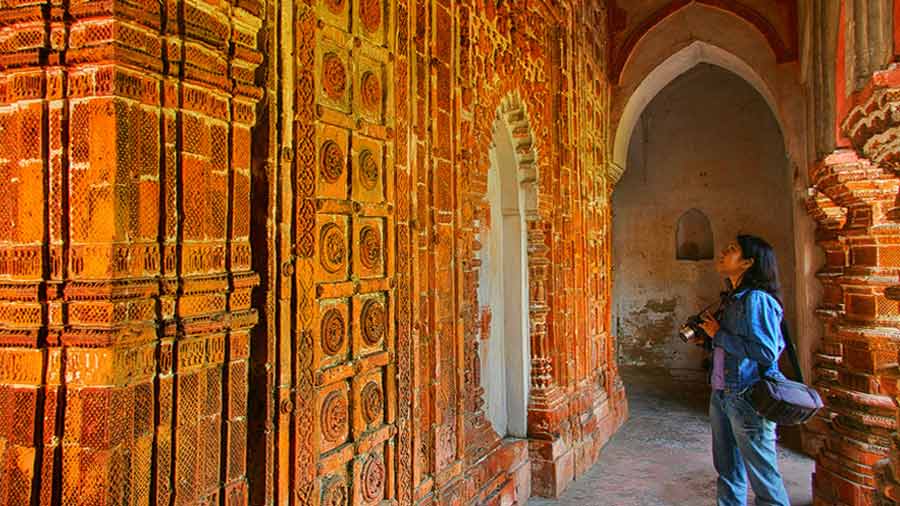
A tourist appreciating the terracotta plaques on the inner walls of the Ananta Basudev Temple
Soumya BandopadhyayApart from these temples, one can also visit the 1791-built premises, thakurdalan and temples of the Kundu family, who became affluent from salt trading with East India Company. With some time in hand, one can visit Tribeni as well.
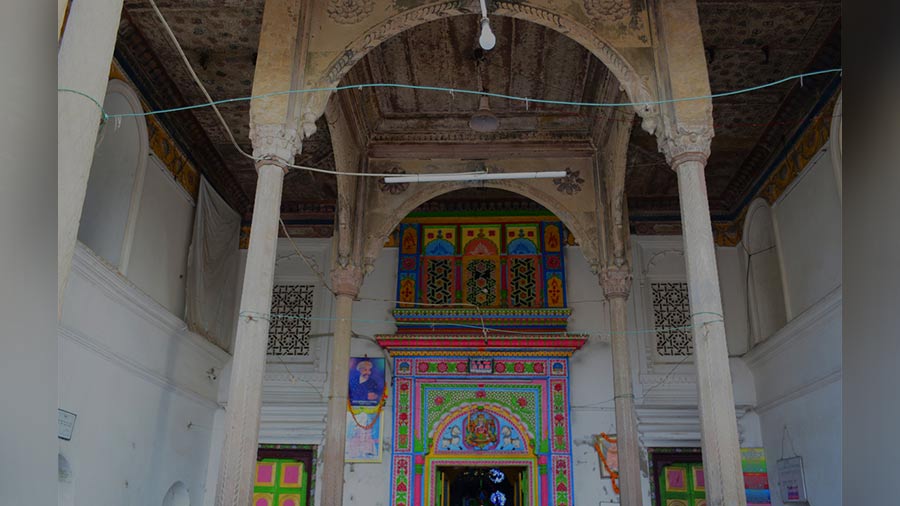
The ground floor of the Hanseswari Temple. Tourists are not allowed on the upper floor
Amitabha GuptaHow to go:
The journey takes around one hour by local train from Howrah to Bansberia in Howrah-Katwa line. By car, the journey takes around one-and-a-half hours covering 56km through Dakhineswar and Delhi Road. The temple is open from 6am to 12.30pm in the morning and 4pm to 6.30pm in the afternoon.


